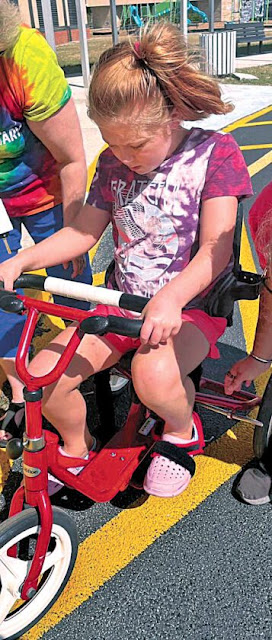And, yes, I followed all of the rules of being a gentleman cyclist--including that one.
I've heard that similar rides have been offered for deaf or audially-impaired folks. That makes sense for the same reasons that tandem rides for the blind are a good idea: It allows them to share in the joy we feel when we ride. Also, it shows that people who partially or completely lack vision or hearing can do just about anything the rest of us can do.
(One of the best and most creative florists I ever encountered was legally blind. He could see colors, forms and arrangements, but had no peripheral visions. Thus, while people and organizations called on him for weddings, banquets and other occasions, he couldn't drive!)
 |
| From The East Side Riders Bike Club website |
Now the East Side Riders Bike Club (ESRBC) of Los Angeles is trying to provide a similar service for another group of people who have been, too often, deprived of the opportunity to ride and do much else we take for granted. They work to help the Watts neighborhood (site of the 1965 riots) with bike programs and other charitable work to help keep kids out of gangs and other criminal activities.
As it happens, communities like Watts have disproportionate numbers of developmentally-disabled children. (When I worked as a writer-in-residence in New York City schools, I was struck by how many of the "special education" or "special needs" kids with whom I sometimes worked were residents of the projects or other poverty pockets.) So, the good folks of the ESRBC saw another opportunity to help: Getting kids with disabilities on bikes.
To that end, they appealed to Buddy Bikes, a Florida-based company that offers "adaptive" bikes. Buddy Bikes is raising money so that ESRBC can get one of their machines--which cost $1500-$2000--at a reduced price.
The "Buddy Bike" that ESRBC would receive is like a tandem in reverse: The "captain" pedals from the rear seat, while the disabled kid spins his or her feet from the front What that means, of course, is that the Buddy Bike has a more complex steering system than what is normally found on traditional tandems.
The sad irony of this, though, is that Buddy Bikes is making their offer just as they are closing shop. Their website says they will stay in business long enough to sell off their remaining inventory, and that they will keep their website up for another three years after.
We can only hope that the ESRBC continues their work!


































